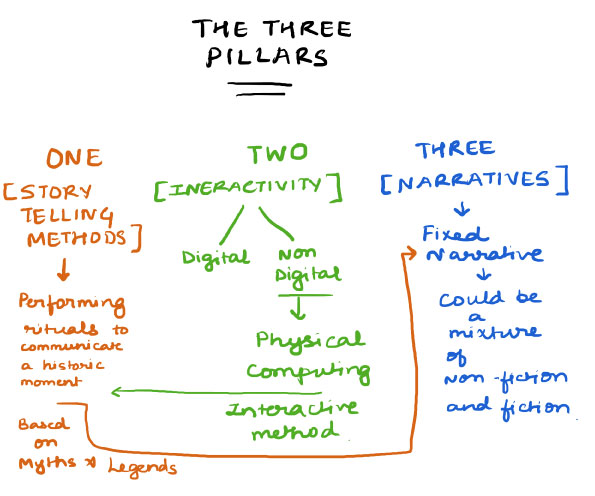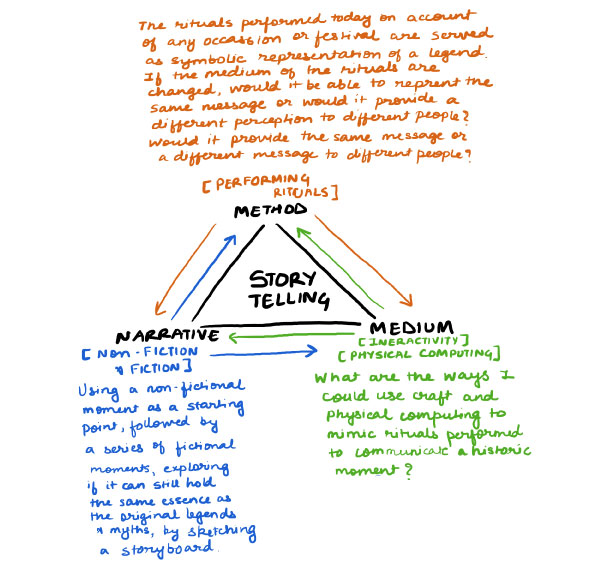Week-5
Solidifying concepts
To put more clarity on my visions about my outcomes or a starting point for exploration I did the activity that was mentioned last week by Andreas: To sketch what we envision to be our outcome. And that actually helped a lot.
Putting my vision into words
Problem statement: The emotional challenges faced by emerging adults (Age group 18 years to 29 years old) that often go unrecognised
The three pillars of my concept include: (1) How can interactive storytelling be used to involve its users into a narrative that is meant to raise awareness about the problem?; (2) How can comics be used as a mode of communication, the power of comics [second pillar statement a bit unstructured]; (3) Explore different ways to raise awareness in emerging adults of the emotional challenges that they face, which often goes unrecognised.
While researching about Immersive storytelling for educational purposes I came across this website about the future of learning with Immersive Storytelling. In this I learned about something known as Interactive fiction where users become active participants in the narrative. I have often come across games like BitLife - LifeSimulator, a game which is particularly about making life choices. This made me think that maybe I should change my second pillar from 'immersive' to interactive.
What is my vision?
A study established that a number of emerging adults don’t seek professional help when facing any emotional turbulence (Morr and Yuan). One of the reasons for not seeking help includes the lack of recognition of the problem, due to being invalidated by “it's just normal, it will go away” (Morr and Yuan). When experiencing stress and anxiety which when left unattended can turn into an even bigger problem, threatening one’s emotional wellbeing.
The objective of this research is to explore a way to raise-awareness about the emotional challenges by using comics as a mode of communication using an interactive storytelling method. Raising awareness about how when little problems left unattended can turn into bigger problems, and how it can also affect their life.
Current state of idea:
Using comics in an interactive storytelling method (like a website or an online exhibition) to create an interactive narrative which will include stimulating challenging situations where users are offered a set of choices affecting their life (in the narrative). This approach can aid in helping the user understand how unaddressed issues affect our lives. The narrative ends with a message about the emotional challenges and what can be done to cope with it, including some helplines (currently - adding link to Lasalle’s counselling portal)
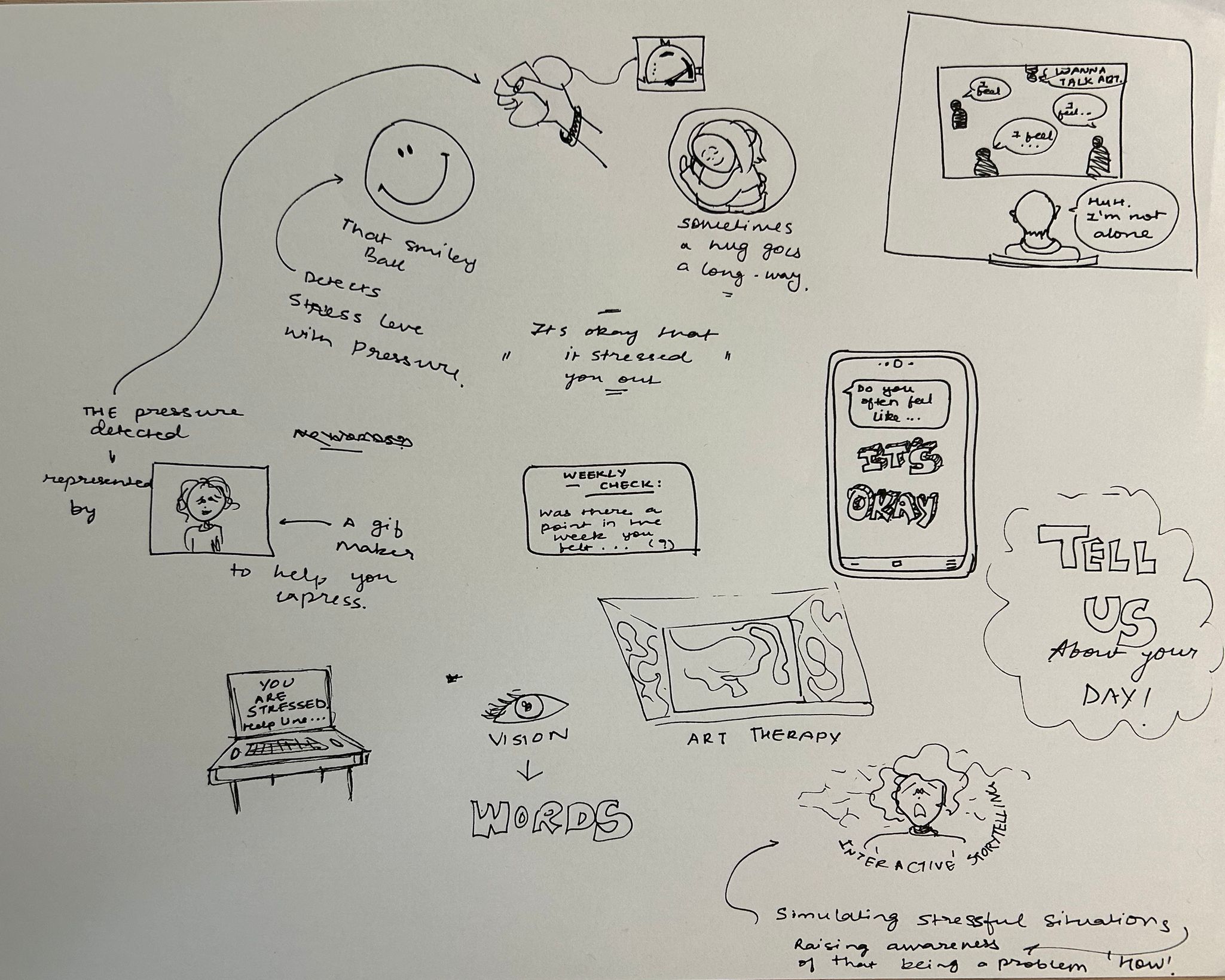
Feedback
While interactive storytelling can be a good step forward, linking storytelling to raise awareness about emotional challenges or mental health could be a tough area of research and context and I would be a good idea to approach the context of your work from a different angle. Storytelling could be the core of my work and the narratives I use could be things I intend to design and so that the narratives could be openended and flexible rather than trying it to a specific context like "emotional challenges faced by emerging adults".
Some questions to consider - What other aspects of storytelling and in particular interactive storytelling come to mind? What is the difference between traditional storytelling versus interactive storytelling? What does that mean in regard to the visual language that needs to be developed? Are there similarities and differences between traditional storytelling and interactive storytelling that for example our generation appreciates or wishes to be different?
Once my research is focused on storytelling and designing different stories interactively, the narratives narratives can draw inspiration from different walks of life. Moving forward, it would be good if my research could be steered more into interactive storytelling and its three pillars could be built around aspects such as aesthetics and visual culture, interactivtiy, non-linearity and a third pillar could be 'creative-writing' as well.
Reflection
As a relfection I made a concept map. It wasn't exactly that organised but I put my thoughts on the paper, and made connecting arrows for my own clarity. The objective for the next consulation is to solidify the three pillars, the research concept.
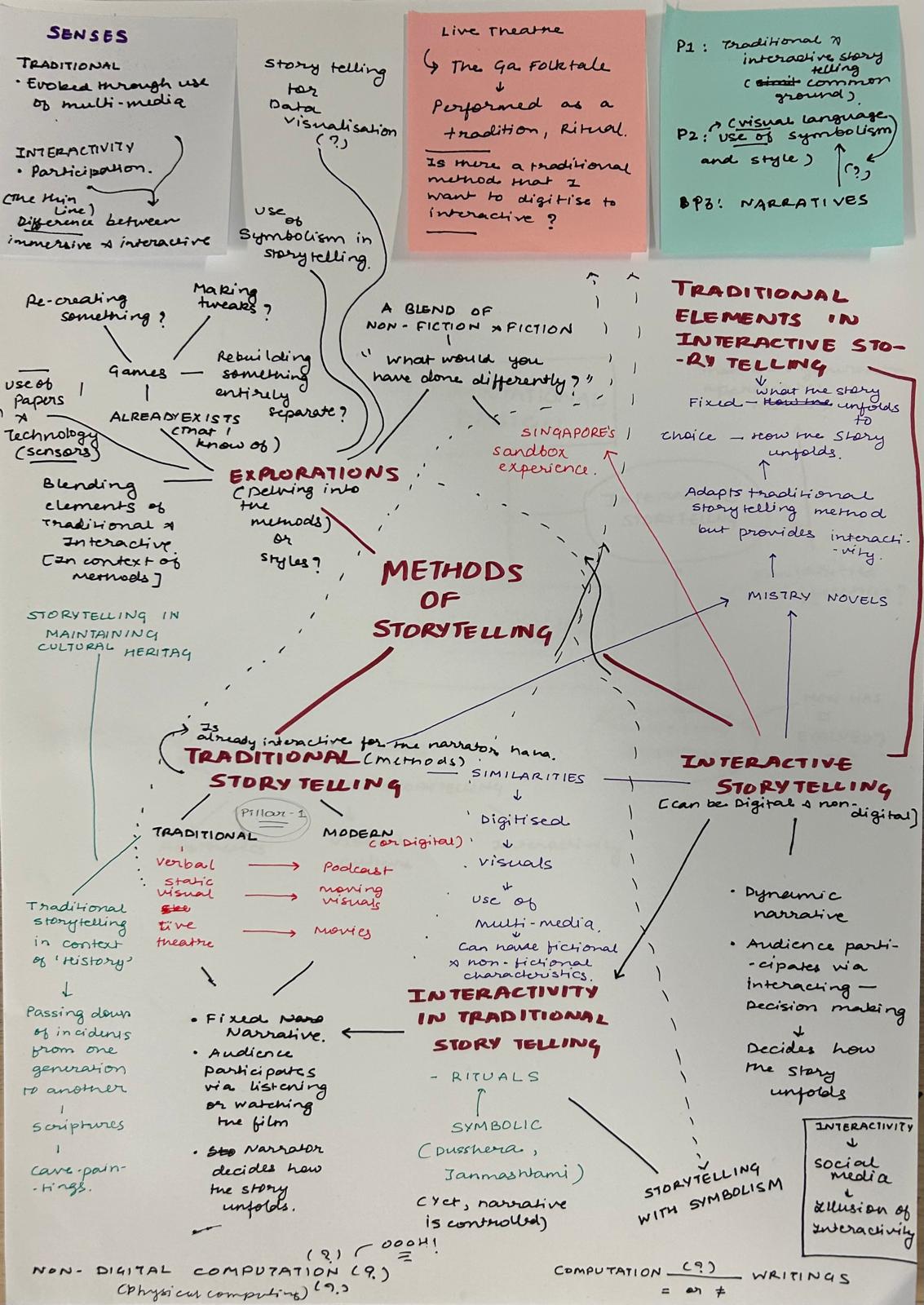
Weekly Consultations
During the consultation we organised the concept map into three pillars after which on that day Andreas told us to assign ourselves an activity. So I first started writing an organised and condensed version of the concept map:
During the consultation Andreas also showed me a website about paper circuit. (Link here) So to try that I got an activity idea.
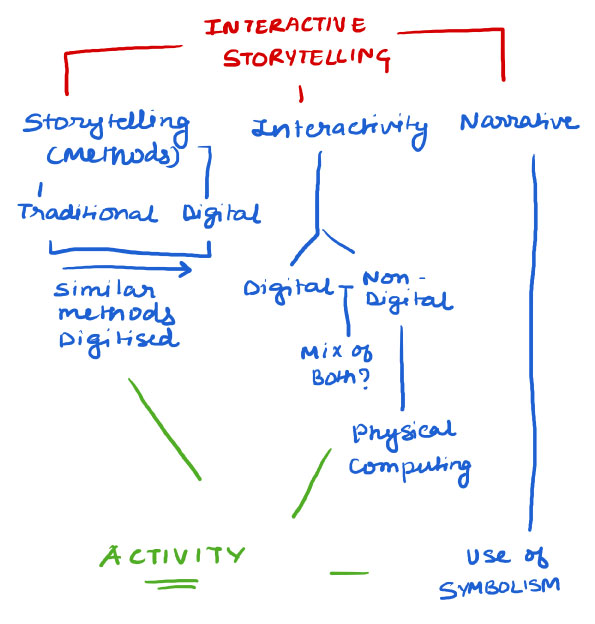
Experiment - 1: Exploring with paper circuits
I drew out a sketch of the activity and a user-journey. Materials I got for this: (A copper tape, LED, battery, Scotch Tape)
After looking at the materials I realised that I cannot execute the part where the user strokes along the lines, so I instead decided to make buttons - “Find the right point”
Reflecting on my approach to the activity
There are a few things I realised while making the paper circuit, there are a few things that could have been simpler. I used quilling strips to cover the lines however I could maybe use two layers - use two papers, the base paper having the circuit connection, and another paper that has the drawing on it. It would also have been easier to make the buttons that way.
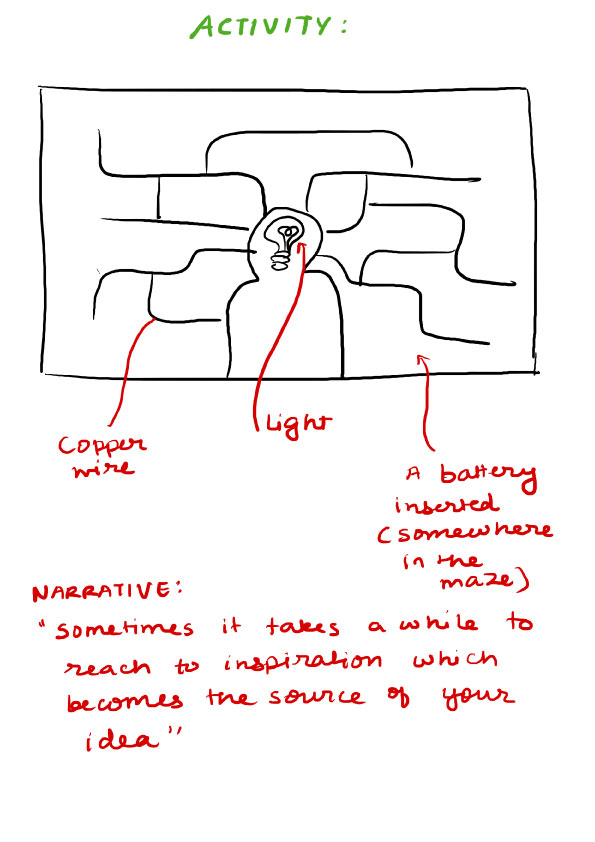
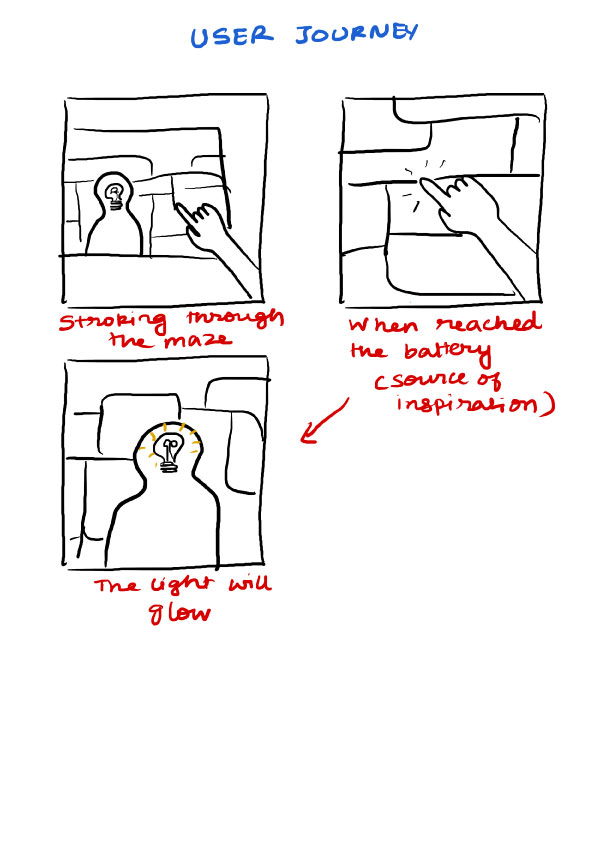
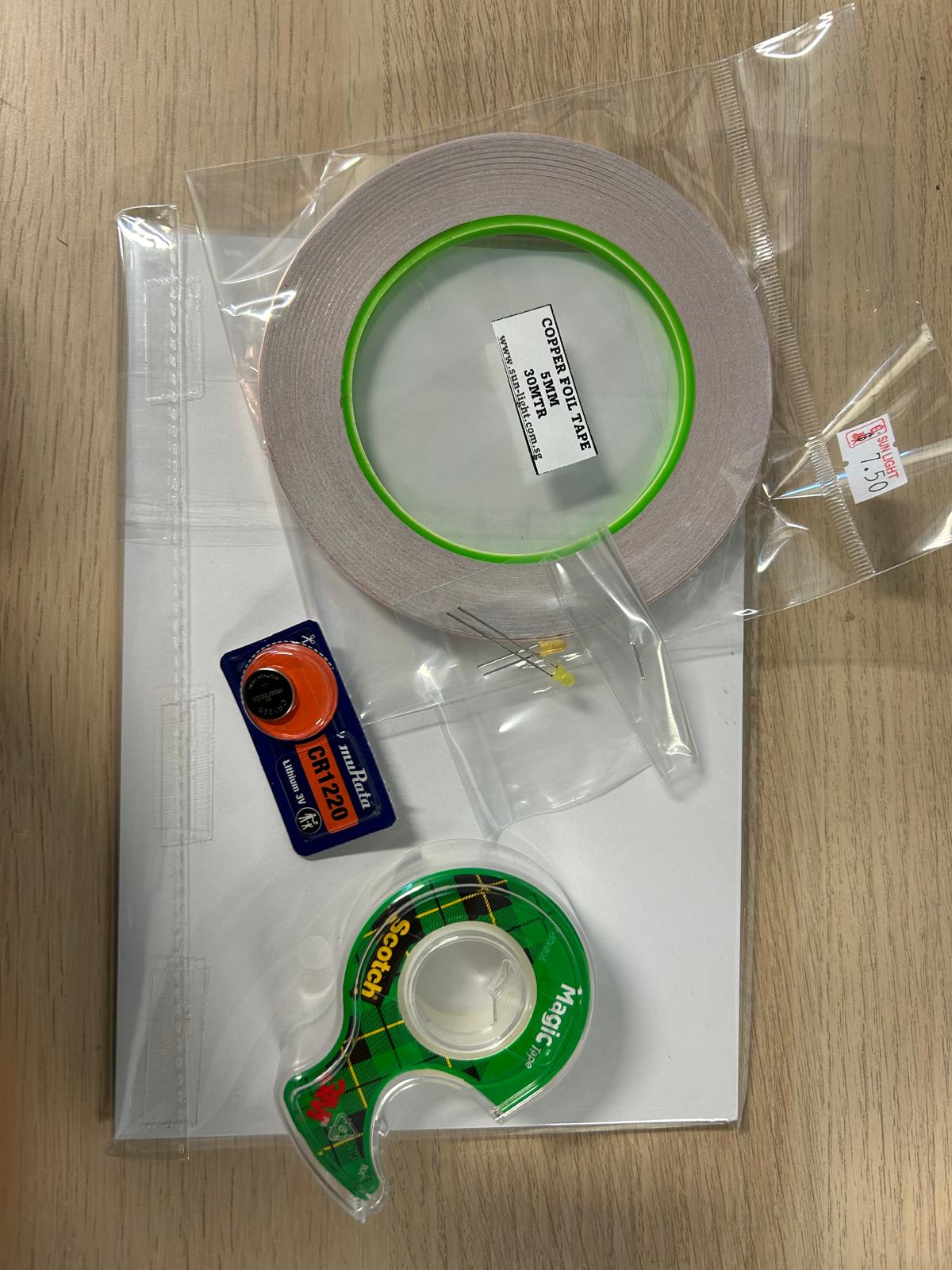
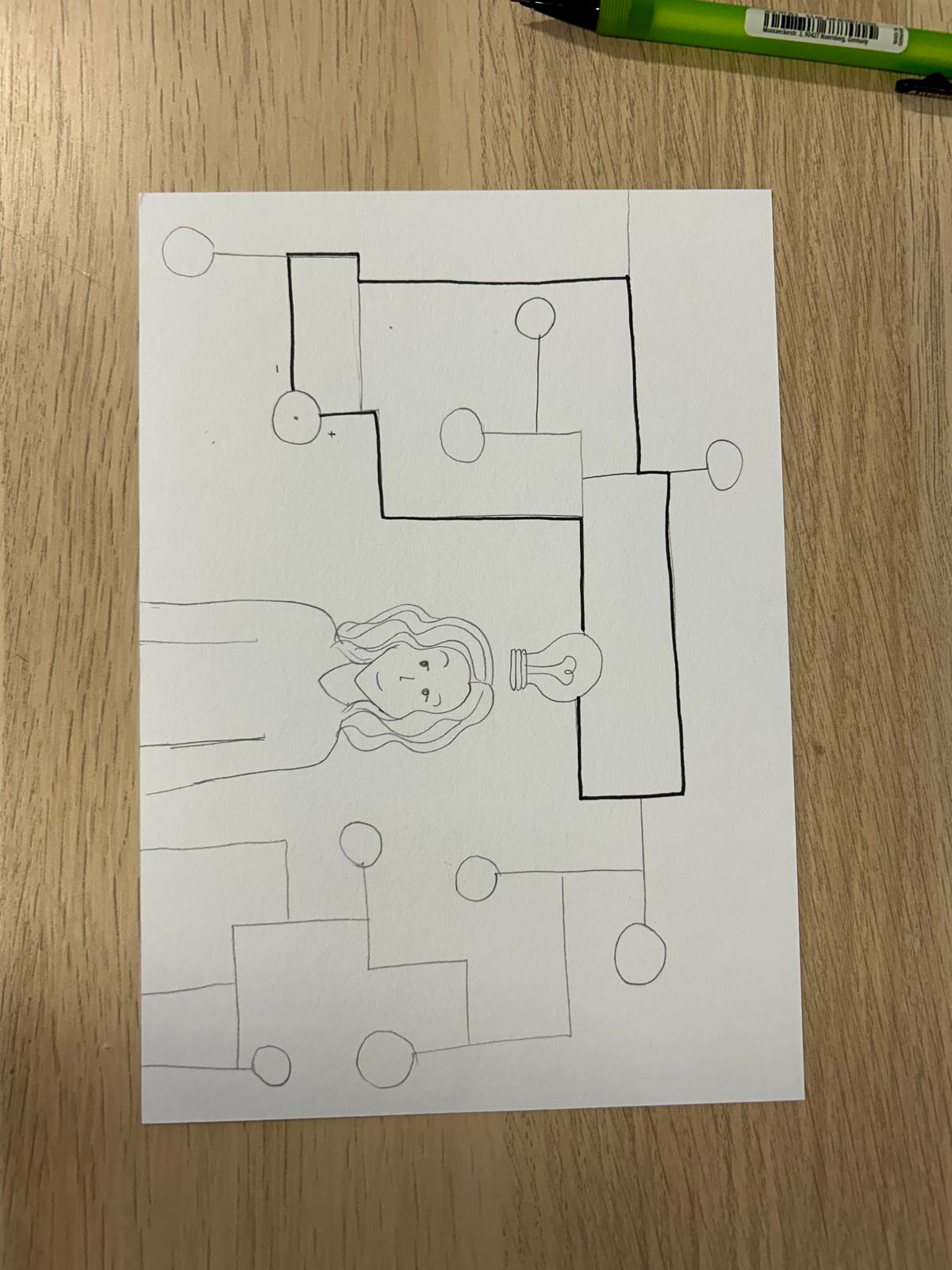
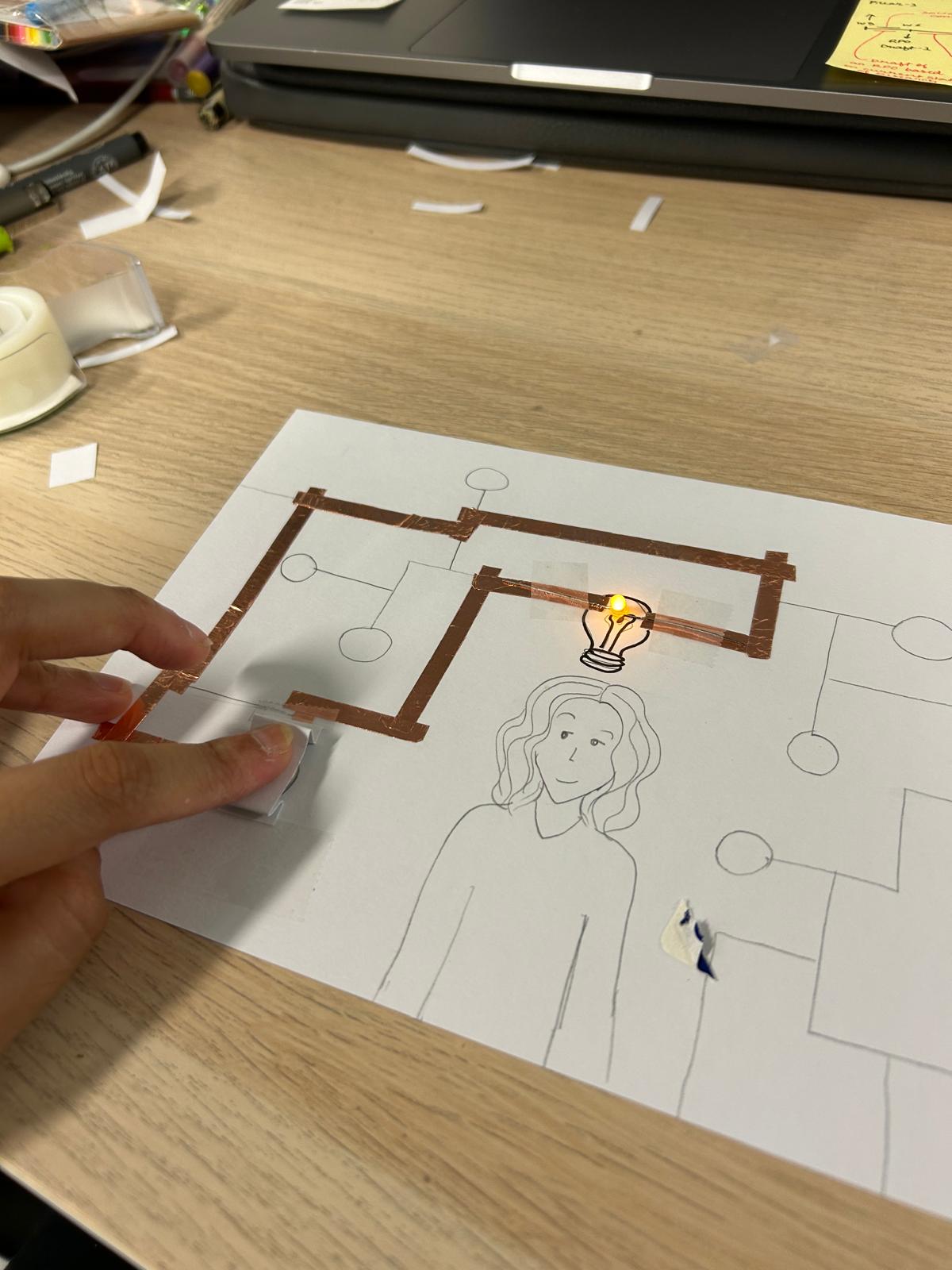
Final Outcome
A few things I learned from doing this activity:
1. I could do better planning and extracted all the options of how I could execute the idea
2. I could maybe not think too much (a feedback from Andreas when I told him the narrative)
3. When working on bigger activities I could also conduct a few small tests and prepare myself for any technical challenges I may encounter. For instance, there were a lot of times the battery wouldn’t work and the LED wouldn’t light up. Which also makes me realise that maybe I should also first completely understand how it works before I execute which can help me rule out some other technical challenges.
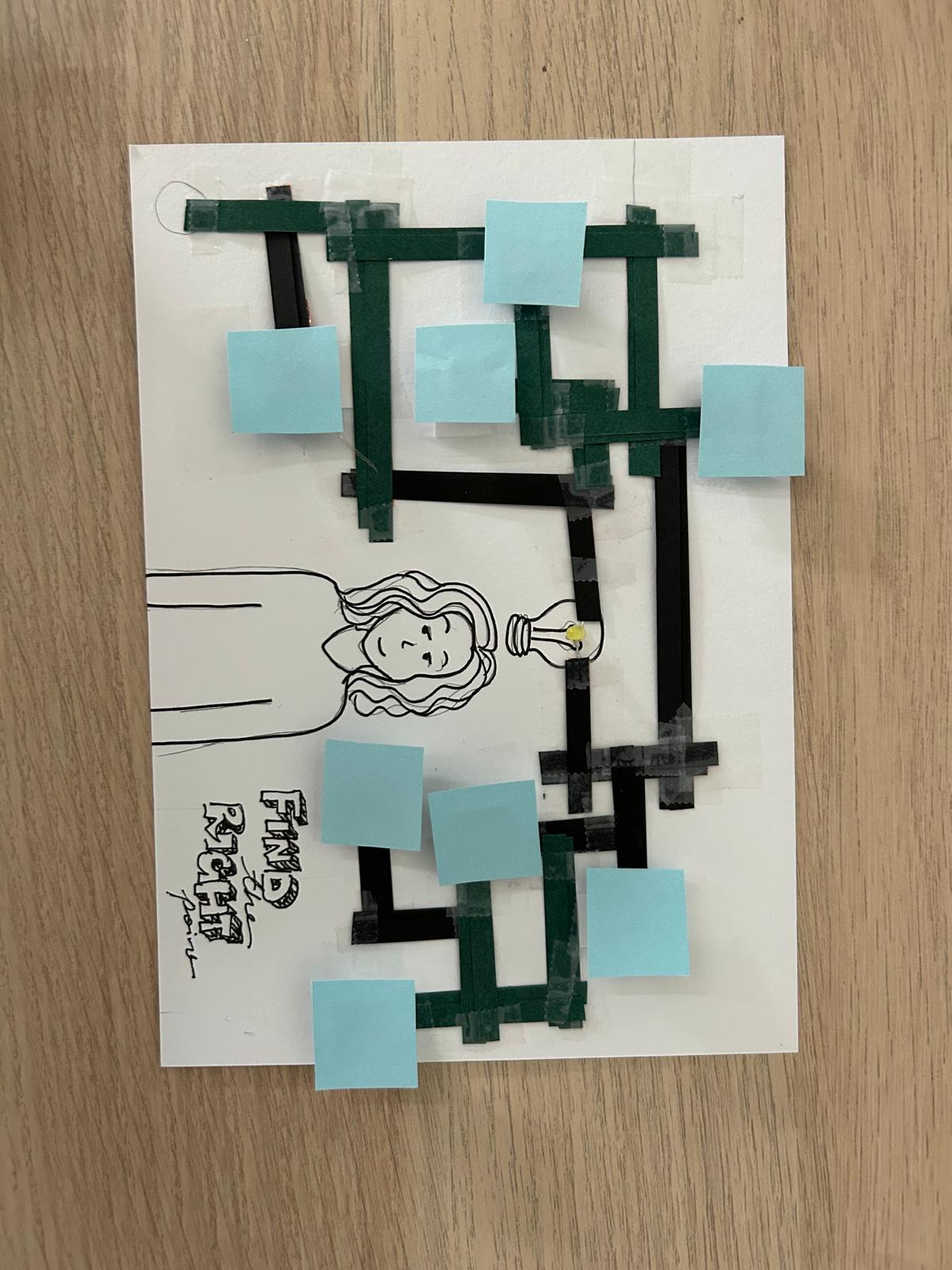
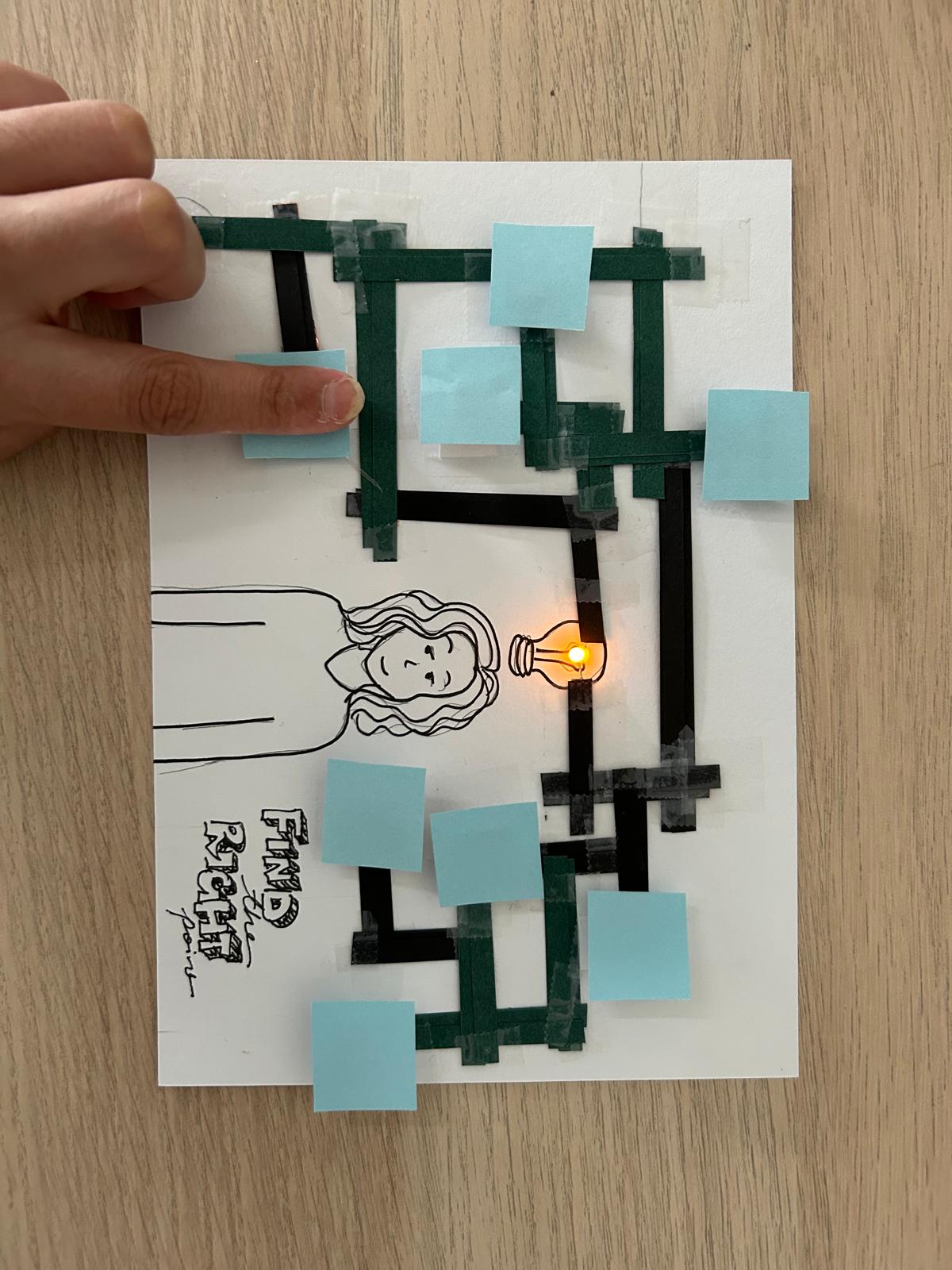
Coming back to my research concept
For the third pillar, I kept it for purpose and solution and asked myself a few queComing back to the research concept, I encountered another question: “is it the narrative that I want to be interactive or the method?”. My next goal now is to also give more structure to the three pillars with more research and critical thinking. And first write the introduction part of my RPO which may also be an indication that I now have achieved complete clarity. Currently, I am unable to explain my concepts without the aid of my concept maps. I believe if I am able to write the introduction I would gain complete clarity on how to explain my concept. So I decided to make another mind map of my current knowledge and form research questions or sentences.
I haven’t researched further however this mind map contains my current state of research questions according to each pillar or would I say further points of exploration to each pillar. I plan on doing another activity. Previously I conducted an activity that had its focus on interactivity. Now I plan on exploring an activity based on Narrative, storyboard a narrative, starting with a non-fictional moment and just naturally sketch and see how I unfold a narrative and to what. Which also brings another question to my mind: “Some of the practices involved in the legend are based on beliefs of the time, will the beliefs of current time influence the essence of the storyline?” - It may be a bit vague but I also want to explore how current beliefs influence the essence of the symbolic representations.
